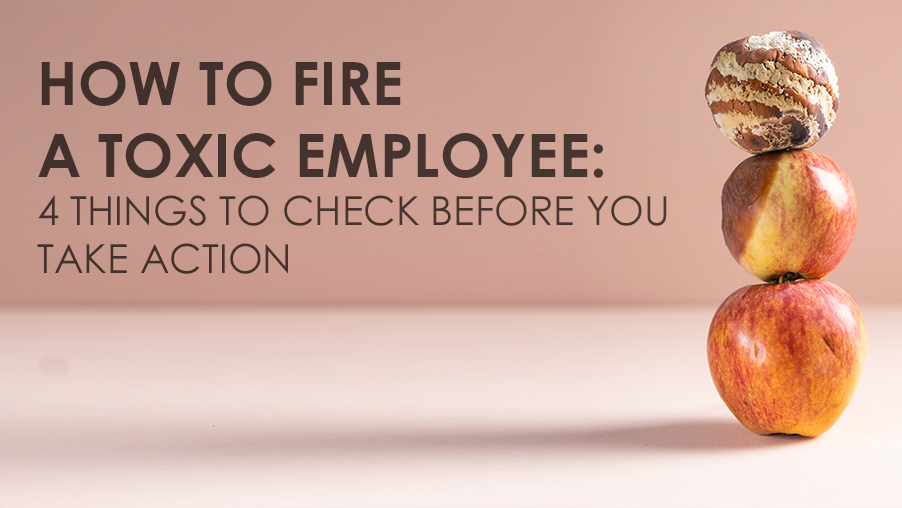-
Services
-
Locations
- Philippines
- United States
- Colombia
- Eastern Europe
Locations -
Industries
-
Resources
- E-Books
- Blog
- Case Studies
Resources - About Us
- Careers
No one wants to lose a top performer. When someone is doing a great job in a critical role, replacing them is difficult, time consuming, and expensive. Depending on your business, they may even take clients with them.
But if a top performer is toxic to your company’s culture, the difficult choice is often the best one. Research from Northwestern’s Kellogg School of Management shows that one bad apple actually does spoil the whole batch. Toxic employees spread negativity and often have a prima donna attitude, requiring too much of your precious time and attention.
Furthermore, teammates of a toxic worker are 47 percent more likely to become toxic themselves, according to Kellogg. And replacing them ultimately yields $12,800 in cost savings. The reality is, replacing a top performer is a real struggle, but rebuilding a damaged company culture is a much taller mountain to climb.
I have faced this challenge at Peak Support — thankfully, not that often. It’s never easy to fire someone, and it’s even more difficult when clients are happy with the person’s performance. But when I’ve made the decision, I’ve never regretted it. It’s lifted a weight off my shoulders, removed a toxic influence, and often created an opportunity for someone new to step up.
In other words: Yes, you can fire a top performer. But it’s critically important to do it right. You need to make sure that you’re making the right decision, and communicating it to all stakeholders in the right way.
If you think a top performer is toxic to your culture, here are four critical things you should do:
1. Make sure you really understand the problem
What is the problem? Is the person taking credit for others’ work? Lying? Creating a hostile environment? Make sure you can summarize the issue and provide specific examples. In some cases, when I’ve taken the time to articulate the problem, I’ve realized that the issue is not as bad as I thought. In other cases, I’ve realized it’s actually much worse.
2. Give feedback
Provide the feedback, and give the person an opportunity to change. I’ve found it’s best to be completely honest. Tell the person that they are a top performer and you really value their work. But you can’t keep them on if they don’t fit with your company’s values. Provide specific examples, and make sure they understand what will happen if they don’t change their behavior.
3. Set a timeline
Give the person a specific amount of time to demonstrate that they have changed – probably somewhere between six weeks and six months. For a top performer, you may want to give them multiple opportunities to improve. But if you haven’t seen any change within six months, it’s time to cut the cord. If the damage to your culture is severe, you’ll want to cut the cord much sooner than that. Otherwise, you might end up losing a lot of other good people as well.
4. Communicate to key stakeholders
Think about how you will communicate this decision to two groups of stakeholders – customers and other team members. Depending on the person’s role, you may want to check in with your clients first. If the person manages a key account, you’ll need to make sure the client isn’t blindsided by the decision.
And other team members will notice the departure. If you don’t communicate the decision well, they might wonder if they’re next. Communicate the decision quickly and clearly, and make yourself available to talk one-on-one for those who have any concerns.
Psst! If you want to level up your leadership skills, you can now download our Emerging Leaders Training guide completely free of charge. 👇
This article was first published in Inc.


